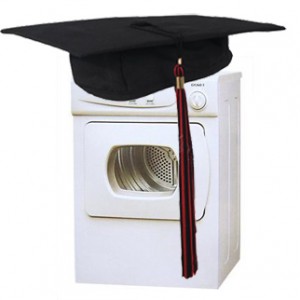 Yesterday’s New York Times carried an article about appliance maker Whirlpool, who was the recipient of a $20 million grant from the Federal Government to fund product development in the rapidly developing field of smart appliances.
Yesterday’s New York Times carried an article about appliance maker Whirlpool, who was the recipient of a $20 million grant from the Federal Government to fund product development in the rapidly developing field of smart appliances.
These devices, once connected to a Smart Grid-enabled electricity supply, will be able to receive information from the grid and cycle down their power demands during times of peak energy use (and higher costs per kWh). At the moment, they are anticipating savings of $40 per year for a standard size dryer.
As always, your mileage may vary.
Next in the Smart Grid appliance pipeline, General Electric Co. will soon roll out its first commercial smart appliance, a hybrid electric heat pump water heater. The company said the pump will save consumers $250 a year in energy costs.
Other “demand response” appliances expected within the next year are refrigerators able to delay defrost cycles and dishwashers that delay operation until energy demands and costs decline at night.
The Federal Energy Regulatory Commission estimates smart grid-enhanced home appliances could shave up to 7 percent off U.S. peak demand through 2019. When this is added to the 15% reduction in demand that Smart Grid monitoring devices have been able to achieve in field testing, we have within our grasp the ability to reduce electricity consumption by 20% without making any structural changes within our homes.
